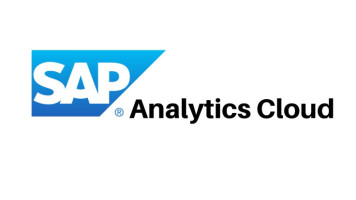SAP S/4HANA vs. SAP ECC: Key Differences & Your Essential Migration Roadmap
- Posted on April 11, 2025
- SAP
- By ROI Blogger
- 676 Views

The evolution of SAP has brought us to a pivotal point: the transition from the legacy SAP ECC to the modern, intelligent SAP S/4HANA. While many businesses are aware of the impending end-of-maintenance for ECC, understanding the crucial differences and crafting a solid migration roadmap are paramount. This blog dissects the key distinctions between these platforms and provides a strategic guide to ensure a smooth and successful transition.
The Fundamental Shift: In-Memory Power & Real-Time Processing
The most significant difference lies in the underlying architecture. SAP ECC relies on traditional disk-based databases, leading to batch processing and data latency. S/4HANA, built on the in-memory SAP HANA database, unlocks real-time analytics, streamlined processes, and a vastly improved user experience.
Key Differences: Beyond a Simple Upgrade
-
Database Architecture:
-
SAP ECC: Disk-based databases (Oracle, SQL Server, etc.).
-
SAP S/4HANA: In-memory SAP HANA database.
-
Impact: Real-time analytics, faster processing, and simplified data model in S/4HANA.
-
User Experience:
-
SAP ECC: Traditional SAP GUI.
-
SAP S/4HANA: SAP Fiori, a modern, user-centric interface.
-
Impact: Improved user productivity, intuitive navigation, and personalized dashboards in S/4HANA.
-
Business Processes:
-
SAP ECC: Traditional, often rigid processes.
-
SAP S/4HANA: Redesigned, streamlined processes leveraging best practices and automation.
-
Impact: Increased efficiency, reduced complexity, and improved agility in S/4HANA.
-
Analytics & Reporting:
-
SAP ECC: Separate Business Warehouse (BW) for analytics.
-
SAP S/4HANA: Embedded analytics with real-time insights.
-
Impact: Faster, more accurate reporting, and proactive decision-making in S/4HANA.
-
Customization & Extensibility:
-
SAP ECC: Extensive custom code development.
-
SAP S/4HANA: Focus on standard functionality and cloud-based extensions.
-
Impact: Reduced technical debt, simplified maintenance, and easier adoption of future innovations in S/4HANA.
-
Deployment Options:
-
SAP ECC: Primarily on-premise.
-
SAP S/4HANA: On-premise, cloud (public, private, hybrid).
-
Impact: Increased flexibility and scalability in S/4HANA.
The Essential Migration Roadmap: A Step-by-Step Guide
A successful S/4HANA migration requires a well-defined roadmap:
-
Discovery & Assessment:
-
Conduct a thorough analysis of your existing SAP ECC landscape.
-
Identify business requirements, technical dependencies, and data migration needs.
-
Determine the optimal deployment option (on-premise, cloud).
-
Planning & Preparation:
-
Develop a detailed project plan with timelines, milestones, and resource allocation.
-
Define a data migration strategy and develop data cleansing procedures.
-
Plan for customization rationalization and process redesign.
-
Technical Migration:
-
Install and configure the S/4HANA system.
-
Migrate data from ECC to S/4HANA.
-
Perform system integration and testing.
-
Business Process Optimization:
-
Redesign and implement optimized business processes.
-
Configure S/4HANA to align with new processes.
-
Develop user training materials and conduct training sessions.
-
Testing & Validation:
-
Conduct comprehensive testing, including unit testing, integration testing, and user acceptance testing.
-
Address any identified issues and ensure system stability.
-
Go-Live & Post-Go-Live Support:
-
Plan a smooth go-live transition.
-
Provide ongoing support and address user queries.
-
Implement continuous improvement measures.
Key Considerations for Success:
-
Executive Sponsorship: Secure strong executive support for the migration project.
-
Change Management: Implement a robust change management plan to ensure user adoption.
-
Data Governance: Establish a data governance framework to maintain data quality.
-
Partner Selection: Choose an experienced SAP partner with S/4HANA expertise.
-
Thorough Testing: Invest time in comprehensive testing to minimize risks.
The Future is S/4HANA: Embrace the Transformation
Migrating to SAP S/4HANA is not just a technical upgrade; it's a strategic investment in your business's future. By understanding the key differences and following a well-defined migration roadmap, you can unlock the full potential of S/4HANA and gain a significant competitive advantage. Don't delay the inevitable; embrace the transformation and position your business for long-term success.





Write a Response